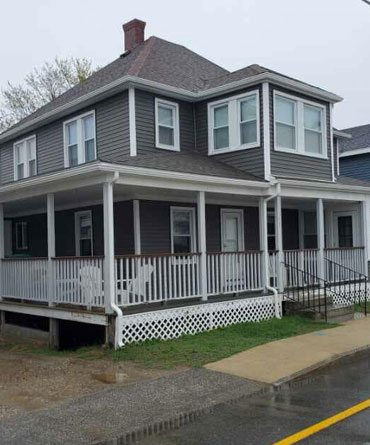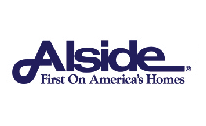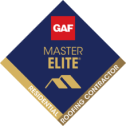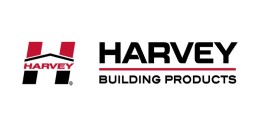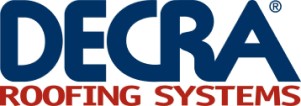Green roofs, also known as ‘living roofs’, are essentially roofing systems that allow plants to grow on them. They are a layer of vegetation planted over a waterproofing system installed on a flat or slightly-pitched roof. Green roofs are more than just a trendy architectural feature; they’re a practical and environmentally friendly solution that’s gaining popularity in urban areas around the globe.
The benefits of installing a green roof are manifold. First and foremost, green roofs provide a natural insulation layer for buildings, potentially reducing energy costs for heating and cooling. They also help manage stormwater runoff, improve air quality, and provide a habitat for urban wildlife. Moreover, green roofs can significantly enhance the aesthetic appeal of buildings and contribute to overall urban greening.
The installation process of a green roof is a multi-stage endeavor. It typically involves initial roof inspection and assessment, design and planning, structural analysis, waterproofing and root barrier installation, drainage and irrigation system setup, growing medium (soil) application, and finally, the planting of vegetation. However, it’s important to note that every green roof project is unique and may require specific steps based on the building’s condition, location, and the desired outcome.
What is a Green Roof?
A green roof, also known as a living roof, is a unique structure that involves the intentional planting of vegetation on rooftops. This innovative concept goes beyond the aesthetic appeal, serving multiple ecological and economic purposes. A green roof is more than just a garden located on top of a building; it is a complex system engineered to support life, sustain natural processes, and provide significant environmental benefits.
Different Types of Green Roofs
Green roofs come in different types, each with unique characteristics and suited for specific applications. The two main categories are extensive and intensive green roofs. Extensive green roofs are lightweight, require less maintenance, and usually feature a thin layer of soil and hardy, drought-resistant plant species. They are ideal for large commercial buildings where access to maintenance may be limited. Intensive green roofs, on the other hand, are heavier and require more maintenance. They can support a greater variety of plants, including shrubs and even small trees, making them more akin to traditional gardens.
How Green Roofs Work
The science behind green roofs is a fascinating blend of botany, architecture, and ecology. Green roofs work by replacing the traditional materials found on a rooftop with layers of plants and soil. These green layers provide natural insulation, regulate the building’s temperature, reduce the heat island effect, and help manage stormwater runoff. The plants on a green roof absorb rainwater, filter it, and release it back into the atmosphere through a process called evapotranspiration. This not only reduces the risk of flooding and water damage but also helps in purifying the air we breathe.
In conclusion, green roofs represent a major step forward in sustainable building practices, combining utility, aesthetics, and environmental conservation. They offer a fresh perspective on urban landscaping, demonstrating that every space, even those as unlikely as rooftops, can contribute to the flourishing of life and the well-being of our planet.
Benefits of a Green Roof
The Environmental Benefits
Among the most significant advantages of green roofs lies in their environmental benefits. These living structures contribute significantly to reducing the carbon footprint, as they absorb carbon dioxide while releasing oxygen. They also mitigate the urban heat island effect, a common issue in large cities where concrete and asphalt absorb and radiate heat, leading to elevated temperatures. Moreover, green roofs act as natural stormwater management systems, absorbing and filtering rainwater, thereby reducing the strain on city sewage systems.
The Financial Benefits of Green Roofs
The financial benefits of green roofs are equally compelling. Green roofs provide excellent natural insulation, reducing the need for artificial heating and cooling, and leading to substantial energy cost savings. Additionally, they enhance the lifespan of the roof by protecting it from weather elements such as UV radiation, extreme temperatures, and precipitation, resulting in decreased maintenance and replacement costs.
The Aesthetic of Green Roofs
Aesthetically, green roofs can dramatically improve the visual appeal of a building. They offer a refreshing contrast to the typical urban concrete jungle, creating an attractive and relaxing space for people to enjoy. This improved aesthetic value can substantially increase the property’s value, making it a worthwhile investment.
Green Roofs Positively Influence Health and Well-Being
Lastly, green roofs positively influence health and well-being. The presence of green spaces in urban environments has been linked to improved mental health, reduced stress, and increased productivity. Furthermore, by improving air quality and reducing noise pollution, green roofs create healthier living and working environments.
To summarize, green roofs offer a plethora of benefits spanning from environmental to financial, aesthetic, and health. They are not only an effective solution for combating urban heat islands and managing stormwater but also a cost-effective investment that enhances property value and promotes healthier living conditions.
Preparation for Green Roof Installation
Assessing the Suitability of Your Building
The first step towards installing a green roof is assessing the suitability of your building. Not all structures are equipped to handle the additional weight and moisture associated with green roofs. It’s crucial to consult with a structural engineer to determine if your building can support the extra load, especially when saturated with water. This may involve evaluating the building’s current state, its construction materials, and the age of the structure.
Identifying the Structural Requirements
Once you’ve confirmed your building’s suitability, the next step is identifying the structural requirements. This process will ascertain the necessary changes or reinforcements needed to support the green roof. Factors to consider include the roof’s slope, drainage systems, waterproofing, and wind uplift. A professional assessment will ensure that the building’s integrity is not compromised over time due to the added weight and exposure to moisture.
Choosing the Right Type of Green Roof for Your Building
Choosing the right type of green roof for your building is another significant point to consider. Green roofs can be broadly categorized into extensive, semi-intensive, and intensive, each with its own set of requirements and benefits. Extensive green roofs are lightweight with shallow soil depth, making them suitable for a wider range of buildings. Semi-intensive roofs offer a balance between the two extremes, while intensive roofs, often referred to as rooftop gardens, require more maintenance but provide a richer biodiversity and greater aesthetic appeal.
Obtain the Necessary Permits and Approvals Before Proceeding With the Installation
Last but not least, it’s crucial to obtain the necessary permits and approvals before proceeding with the installation. Green roof systems often involve significant changes to the existing roof structure, so it’s important to ensure that all modifications comply with local building codes and regulations. This step may involve submitting detailed plans and specifications to your local authorities for examination and approval.
Step-by-Step Guide to Green Roof Installation
Apply the Waterproof Membrane
Our next step in navigating the process of green roof installation is applying the waterproof membrane. This crucial layer serves as a barrier, protecting your building from potential water damage. It’s essential to choose a high-quality, durable membrane that can withstand the elements and the weight of your green roof. Proper installation is key to prevent leaks and ensure the longevity of your roof.
Create an Efficient Drainage System
Creating an efficient drainage system follows the application of the waterproof membrane. This system plays a pivotal role in managing rainwater runoff and preventing waterlogging, a significant concern in green roofs. The drainage layer often consists of lightweight, porous materials that allow excess water to flow away from the roof. Consideration of your building’s existing drainage and the slope of your roof is essential when designing this system.
Add the Root Barrier and Insulation
Next, we add the root barrier and insulation. The root barrier prevents plant roots from penetrating and damaging the waterproof membrane. The insulation layer, on the other hand, improves the building’s thermal performance, reducing energy consumption. It’s important to use materials that can withstand the constant moisture typical of a green roof environment.
Laying the Soil and Planting the Vegetation
The fourth step involves laying the soil and planting the vegetation. The soil, also known as the growing medium, supports the plant life on your green roof. It’s typically lightweight and rich in nutrients to promote plant growth. You’ll want to choose plants that are hardy and well-suited to the local climate, with the ability to thrive with minimal maintenance.
Understand the Maintenance Requirements After Installation
Lastly, understand the maintenance requirements after installation. Green roofs demand regular upkeep to ensure their health and longevity. This includes watering, weeding, and occasional replanting. Regular inspections are also necessary to check the integrity of the waterproofing and drainage systems. Remember, installing a green roof is not a one-time task but a long-term commitment. However, the ecological and aesthetic benefits it offers make this commitment worthwhile.
Common Challenges and Solutions in Green Roof Installation
Dealing With Weight Restrictions
Green roof installation, while a worthwhile investment, can present a few challenges; however, with the right knowledge and approach, one can effectively navigate these obstacles. One of the primary hurdles that may emerge is dealing with weight restrictions. The total weight of a green roof – including the soil, plants, and additional layers – can be considerable, and not all structures can support such a load. To overcome this, it is crucial to involve a structural engineer in the planning stages. They can assess the building’s capacity and guide the selection of appropriate lightweight materials and plants to ensure the building’s safety and integrity.
Managing Water Drainage Issues
Another common challenge is managing water drainage issues. A green roof is designed to absorb and retain some rainwater, but it also needs to effectively drain excess water to prevent damage. If not handled properly, water can pool on the roof, leading to leaks and structural problems. To mitigate this, one should design an efficient drainage system that can handle heavy rainfall. This includes installing a waterproof membrane and a drainage layer, as previously discussed, to channel water away from the roof.
Concerns About The Maintenance and Longevity of Green Roofs
Lastly, there are valid concerns about the maintenance and longevity of green roofs. The upkeep of a green roof is more involved than that of a traditional roof, requiring regular watering, weeding, and inspection for pests and diseases. To address this, consider installing an automatic irrigation system and using plants native to your area, which are more likely to thrive and require less care. Regular maintenance checks by professionals can also help detect and address any issues early, ensuring the longevity of your green roof.
Conclusion
In conclusion, the process of green roof installation, while complex, is a journey worth embarking on. The environmental and aesthetic benefits of green roofs far outweigh the challenges. They not only provide a verdant oasis amidst the concrete jungle but also offer numerous ecological benefits such as improved air quality, stormwater management, and increased biodiversity. Moreover, these installations add value to your property and contribute to energy savings by providing natural insulation.
The process of green roof installation requires detailed planning and careful execution. It can be a tall order to handle on your own, especially when dealing with issues like weight restrictions, water drainage, and maintenance. But remember, with the right professional help, these challenges can be overcome. A structural engineer can help assess the building’s weight capacity, design an efficient drainage system, and offer solutions for regular maintenance.
So, as we wrap up this discussion on green roof installations, we encourage you to consider this green solution for your roofing needs. Look beyond the initial costs and challenges, and you will see a long-term investment that pays off in multiple ways. It’s not just about having a roof over your head; it’s about making a difference, one roof at a time.
With careful planning and the right support, you can successfully navigate the process of green roof installation and contribute to a greener, healthier environment. All Weather Exteriors LLC provides expert green roof installation and roof replacement services, combining sustainability with superior craftsmanship. Their team ensures that every green roof is durable and energy-efficient, and enhances the aesthetic appeal of your property.
Name, Address, and Phone
All Weather Exteriors LLC
251 Pine St, Manchester, NH, 03103, US
866-469-0972
Social Media’s
https://www.homeadvisor.com/rated.AllWeatherExteriors.51772040.html





